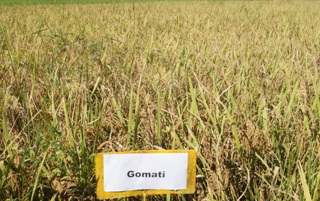Fertilizer application based on soil health evaluation: A success story for Phaipheng village, Mizoram
Mizoram is an agriculture dependent state where hill agriculture based systems are practiced like its six sisters of North Eastern states. Rice is the major staple food and agriculture crops like maize, soyabean, french beans, cow peas, peas and horticulture crops such as citrus, banana, arecanuts etc. are common. Due to its sloppy terrain, physiography and other related constrains such as improper utilization of scientific cultivation methods the average productivity remains low. Out of the total geographical area of 2108700 ha, only 3.53 % has 0 to 25% slope which can be utilized for wet land rice cultivation. Out of this 74644 ha having 0 to 25% slope, only 15308 ha which is 20.5% area is under wetland rice cultivation. It has been estimated that only 32% of the state rice requirement is produce. Another reason for less rice production might be the jhum practice where the average yield of upland rice is low.
For soil test based fertilizer application to increase crop productivity based on soil health card scheme which was launched from the year 2015, ICAR RC NEH Region, Mizoram Centre has collected 28 soil samples (0-15 cm) depth from Phaipheng village, Bilkhawthlir, Kolasib District. The soil samples were analyzed for soil pH, organic carbon (OC %) and available nitrogen (N), phosphorus (P) and potassium (K). The soil was acidic where soil pH ranged from 5.3 to 6, high OC (0.37 to 1.2 %), low available N (56 to 194 kg ha-1), high average available P (7 to 100 kg ha-1) and medium in available K status (69 to 398 kg ha-1). Thus the soil test in general revealed that the soils of this region required nitrogen and potassium for increasing rice productivity.
After the distribution of the soil test results to the respective farmers, awareness programmes and training were conducted in the village. Chemical fertilizers were recommended and if at all the recommended dose cannot be applied, the need to prioritized N and K was stressed. Yield from four different varieties grown by the farmers of the particular region was assessed where N @ 60 kg ha-1, 30 kg ha-1 P @ 40 kg ha-1 K in the form of urea, SSP and MOP were applied and compared with a control with no fertilizers. The average rice yield for Gomati was 2.4 t ha-1 under control and 4.2 t ha-1 under fertilizer application. Tapashi under control system was 2.0 t ha-1, while 3.7 t ha-1 was obtained from fertilizer application. Similarly, Chanmonika, Aizong and Birun variety yielded 2.1, 2.3 and 1.9 under control while the same variety yielded 3.6, 3.5 and 2.4 t ha-1 due to fertilizer application. Most farmers in this region are unaware of balance dose of fertilization. With the initiation of soil test health card distribution and awareness, farmers can have more rice production. Although it may be too early to judge the initial success of soil test based fertilizer application, there are still many steps for increasing the productivity of rice in this region. Other techniques like time and method of fertilizer application, seed treatments etc. has to be incorporated slowly. Thus if proper scientific soil testing based fertilizer application and other techniques are implemented, the production of rice and economic income of the farmers can be uplifted.
Soil Health Card distribution
View of Gomati rice variety with fertilizer Source:
ICAR Research Complex for NEH Region, Mizoram Centre, Kolasib, Mizoram-796081

